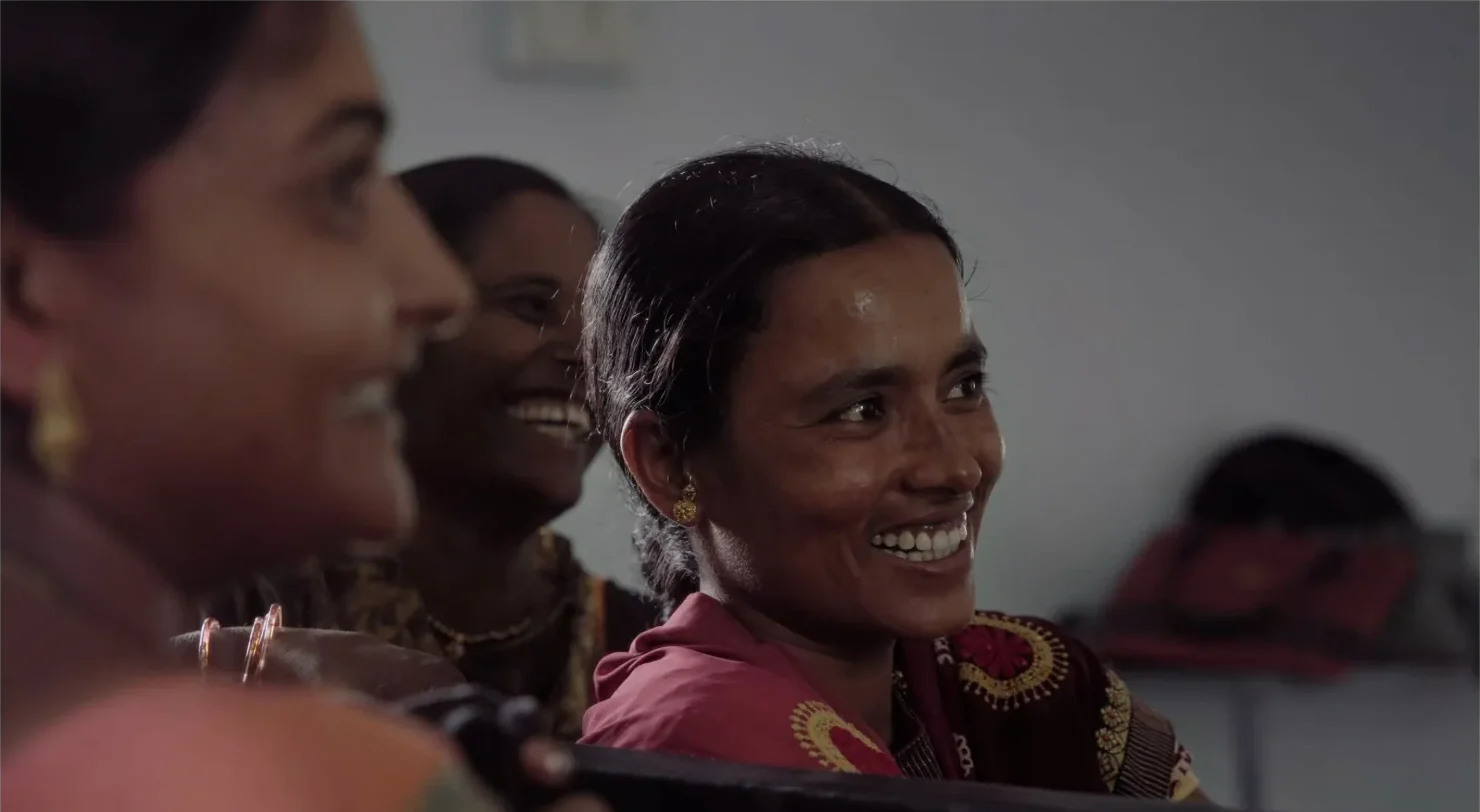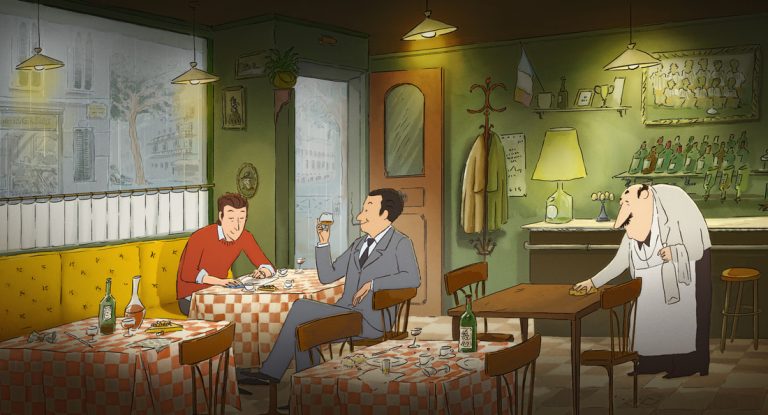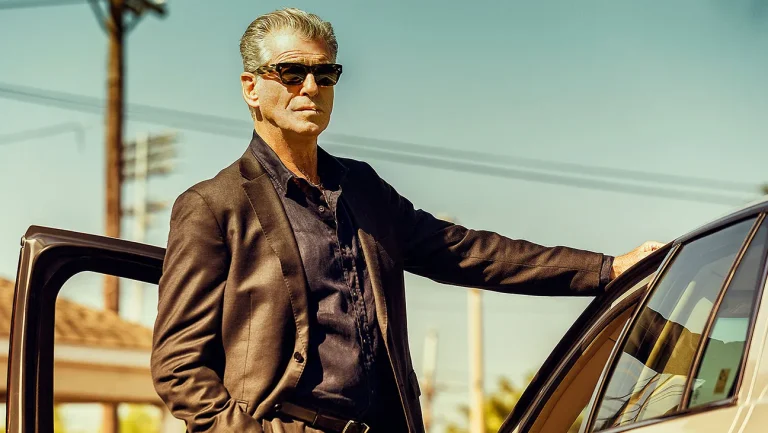There’s a bruised dignity at the heart of Kinshuk Surjan’s documentary, Marching In The Dark. Stories embedded within it are tough, brutal, and cyclical in their relentlessness. It’s a direct plunge into misery when we enter the film. The shameful tragedy of India’s farmers being pushed into the tightest corner is not a new story; instead, it has only accrued more desperation and hopelessness. A well-oiled system that forces farmers into being chained to severe debt and drains them of all options comes under the scanner in the film, albeit Surjan perceptively chooses not to turn it into a tirade piece but addresses it through long ignored vantage points.
The rural areas of Maharashtra, constantly afflicted with droughts, are the site of action in the film. Farmers initially resist the low market price but are eventually compelled to make peace with it. They are told their harvest isn’t in the best shape, so they cannot expect good selling deals. While they are aware of the many levels on which they are marginalized and exploited into getting trapped in vicious debt and frightening poverty, they know no way out. Unable to fathom and imagine any possible rescue from their suffering, suicide becomes the only recourse. Their widows find themselves completely abandoned to grapple with the bleakest of situations. To process their individual mourning, they form a support group and conduct discussions on the joys and sadness of their lives that are overseen by a local psychologist.
This is a film seeped in implied fury and profound grief but one that also channels a radical repossession of agency through the very nullifying tragedy. Melancholy is, therefore, harnessed into this propulsive life force that the widows try to embrace. Of course, not all of them are on similar wavelengths. They are all at different stages in their bereavement, but the larger, prevailing note of insistence stays constant. None of them must let themselves be drowned out by their heartbreaking circumstances.
They pull each other up and offer solace. Even though they are a bunch of strangers with solidly differing ideologies intertwined by a common tragedy, they are the only ones who can fully tap into and understand the depths of each other’s grief and neediness. One of them confesses she fears her own family the most. The stigma and isolation of widowhood are so crushing that it threatens to narrow down these women’s lives just to the mere act of survival. That they can have dreams and aspirations and be capable of leading their lives beyond the end-all scaffolding of their husband’s deaths is seen as an impossibility both within their family and outside it.
Family and society strive to muffle the widows’ voices and desires, wishing to erase their entire existence. Somehow, a life of ignominy becomes their singular inheritance from their husbands’ suicides. Close family members retreat from their lives yet retain an entitlement to skewer them the moment they try to show some sort of growing into their own particular selves, independent of their late husbands. The taboos are immense. There’s a lovely moment when the widows, barred from all festivities, get to play Holi among themselves. They are initially shy and guarded but gradually lean into it with abandon. As soon as it is time for them to go home, they scrub away the color off their faces to stave off any critical comments by their families. Through such scrupulously and attentively observed scenes, Kinshuk Surjan leavens the proceedings but also keeps the grim underside always within clear view.

Sanjivani’s (who becomes our guide through this fraught landscape) husband killed himself when her younger child was not even two. She got to know of the episode over a phone call when she was at her parents’ house. She has to fend for herself and her children by doing a variety of odd jobs. Besides stitchwork, she takes up an assistant’s job at a clinic. Unbeknownst to her family, except for her sister-in-law, she was also admitted to a college. While Sanjivani’s fluttering anguish and fears inform the trajectory we are taken on, they aren’t primed as the markers of her identity. Her spirit is incredible and the epitome of fortitude. Though she has her doubts and emotional crises, her ambition and tenacity make her seem almost invincible.
Women at the support session reiterate their own strength and resilience. They talk of how they now do the stuff their husbands did as well as manage housework; however, unlike them, they aren’t confronted with such dire straits. One of the widows casually remarks on the persistence of women, that they can do about everything yet not beat themselves up about it. While the women seem to overlook the situation and never should come to the degree that it calls for such virtue, there’s an undeniable beat of vigor and proactive potential in such statements that fill the therapeutic sessions.
Likewise, Sanjivani hardly lapses into laments over her harsh reality. As someone puts it in the support sessions, tears have all dried up. The women must live not just for their kids but also for themselves. Life is short and fleeting, and they only have one chance to see and experience the world, an old woman at the sessions asserts. She assumes the role of a reassuring guardian who emboldens these women who are hesitant and unsure of navigating their lives without the bulwark of male dependence. As much of an empowering beacon as she can be, she also has her own share of stodgy prejudices. In illuminating these rich, dense paradoxes, Marching In The Dark perceptively indicates liberation may not always be absolute and binding. It can contain in itself a series of contradictions and zones of belief that are too deep-sunk to be freshly determined and re-assessed.
The widows live through extreme precarity, with social frameworks bent on repressing them, but they choose to battle it out every single moment of their lives. Unlike their husbands, the language of defeat and resignation becomes, for every waking moment, the thing they consciously stay wary of. With dogged conviction, they soldier on. They may not know what new batch of agonies awaits them at life’s next turn but they dare to go at it nevertheless. This painfully vital documentary is a stirring declaration that demands we listen to their stories with the generosity they deserve.
‘Marching in the Dark’ premiered at CPH: DOX 2024 (Copenhagen International Documentary Film Festival)
Marching in the Dark (2024) Documentary Links: IMDb, CPH: DOX









![The Unmaking of A College [2022] Review – An Important Documentary About Preserving And Promoting Education](https://79468c92.delivery.rocketcdn.me/wp-content/uploads/2022/01/The-Unmaking-of-a-College-2022-768x432.jpg)